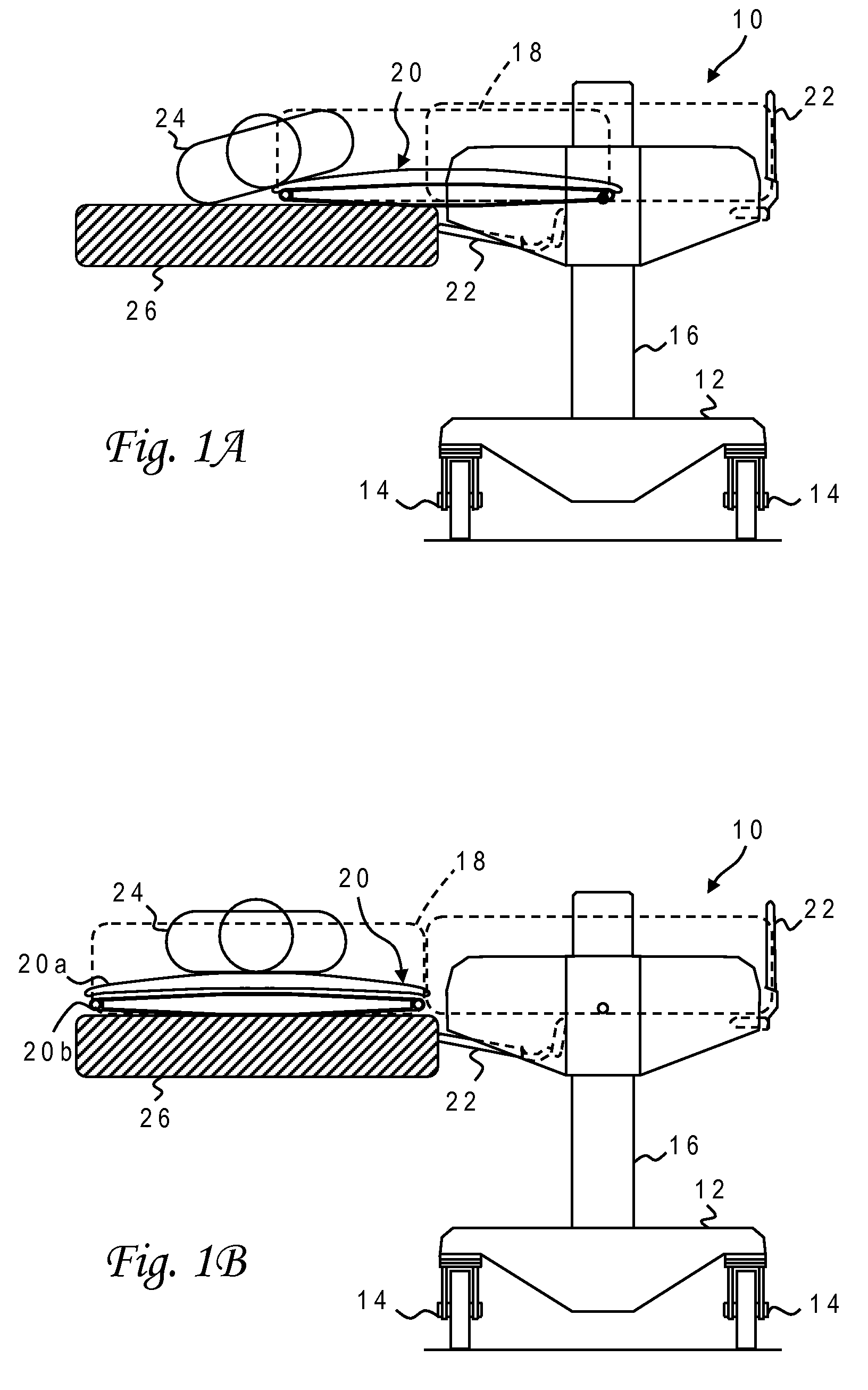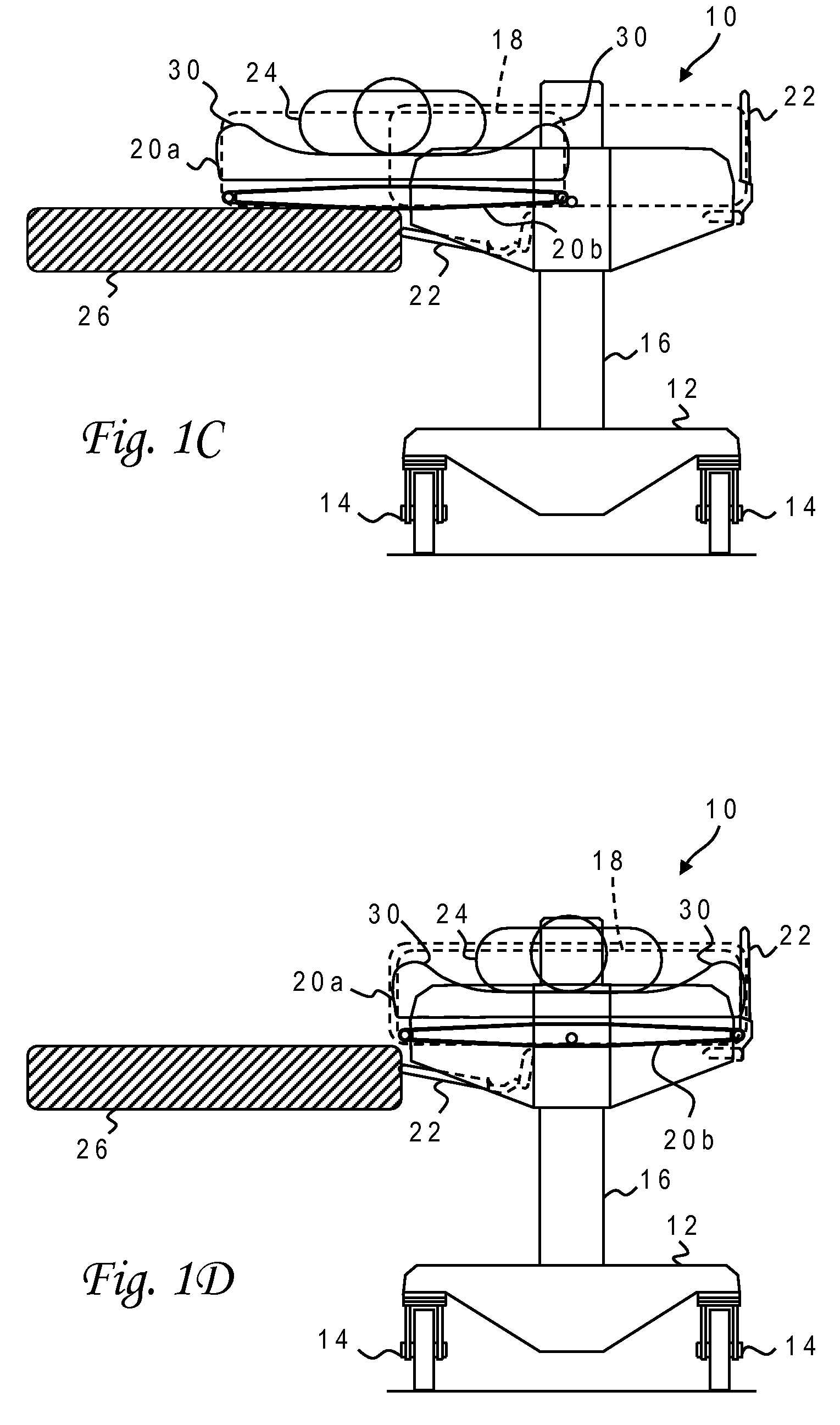Table assembly for patient transfer device
a technology for transferring devices and tables, which is applied in the direction of wheelchairs/patient conveyancing, transportation and packaging, nursing beds, etc., can solve the problems of exacerbated problems, unable to use devices in all settings, and the design of rotating belts, so as to facilitate and comfortably acquire, transport and deliver patients.
- Summary
- Abstract
- Description
- Claims
- Application Information
AI Technical Summary
Benefits of technology
Problems solved by technology
Method used
Image
Examples
Embodiment Construction
)
With reference now to the figures, and in particular with reference to FIGS. 1A-1D, there is depicted one embodiment 10 of a patient transfer device constructed in accordance with the present invention. Patient transfer device 10 is generally comprised of a frame or base 12 mounted on four or more wheels or casters 14, two vertical support members or columns 16 mounted on base 12, a horizontal slide assembly 18 attached to support columns 16, a table assembly 20 attached to slide assembly 18, and side rails 22 attached to support columns 16.
FIG. 1A illustrates a patient acquisition position of slide assembly 18 and table assembly 20 wherein a leading edge of table assembly 20 has crawled about halfway under the patient 24 who is resting on a bed or other support surface 26. Table assembly 20 includes an upper table 20a and a lower table 20b each of which is surrounded by a respective endless belt or web. In the patient acquisition position, upper table 20a is in forcible contact wi...
PUM
 Login to View More
Login to View More Abstract
Description
Claims
Application Information
 Login to View More
Login to View More - R&D
- Intellectual Property
- Life Sciences
- Materials
- Tech Scout
- Unparalleled Data Quality
- Higher Quality Content
- 60% Fewer Hallucinations
Browse by: Latest US Patents, China's latest patents, Technical Efficacy Thesaurus, Application Domain, Technology Topic, Popular Technical Reports.
© 2025 PatSnap. All rights reserved.Legal|Privacy policy|Modern Slavery Act Transparency Statement|Sitemap|About US| Contact US: help@patsnap.com



